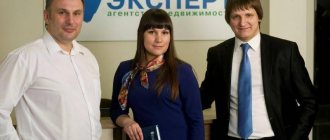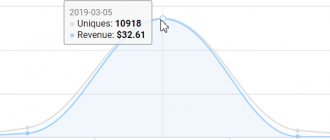Modern concrete production as a business is very promising, but it is based on the need to use serious equipment, which requires the preliminary preparation of a competent and complete business plan. Concrete production plants can be independent enterprises or be a link in the chain of the construction process.
A less expensive form of organizing such a business is to open a mini-factory, which allows not only to reduce time and money costs, but also to obtain the most automated production, controlled by one person. In addition, the easy change of modules facilitates the rapid changeover of the plant to the production of concrete of a different brand.
Registration and taxation
At the first stage, the premises must be registered. There is no need for licensing of this type of individual activity and almost any legal entity can open such a business. Before organizing a mini-concrete production business, you should choose the most preferable legal form. It is advisable to register and open an account for an organization in the form of an LLC. The average cost of this procedure is about 15 thousand rubles.
The organizational and legal form of LLC is more secure and provides significant opportunities when conducting this business. In case of failure, all risks of the founders fall only on the authorized capital.
If you have an income of less than 60 million rubles, you should apply for taxation in the form of the simplified tax system, which will exempt production from taxes on profits, property and VAT. For a larger amount of income, taxation under OSNO is required with the full scope of accounting and payment of all general taxes.
When preparing organizational and legal documents, it is necessary to indicate OKVED code 26.63, which is due to the production of ready-mixed concrete.
equipment requirements
The most difficult and costly stage, which should be reflected in the business plan for the production of concrete, is represented by the acquisition of the main blocks-modules. A standard set of such units, as well as installation of all production equipment, will cost several million rubles, which requires significant initial capital investments.
The necessary equipment is presented in blocks:
- dispenser module;
- module-hopper for cement, water base and inert fillers;
- storage module for cement;
- screw feeder module;
- automatic module equipped with a control system;
- module for steam supply and water supply.
Equipment costs in rubles
Stationary and mobile mini-factories have automated lines, including:
- cement bunker with a volume of 40 cubic meters - 470 thousand;
- dispensers for facial and base concrete - 580 thousand;
- mixers of facial and base concrete - 90 thousand;
- auger - 130 thousand;
- belt type conveyor with a capacity of 50 cubic meters per hour - 90 thousand;
- reducer and lift - 145 thousand;
- return type conveyor to exit - 95 thousand;
- rail-type loader - 85 thousand;
- plate conveyor - 45 thousand;
- dispensers for cement and water - 155 thousand.
The total cost of a standard automated line is about 2 million rubles. Prices for semi-automatic mini-production lines start at 450 thousand rubles.
Approximate calculations - mini-factory
When operating a semi-automatic concrete mini-plant with a productivity of about 10 cubic meters of M-400 concrete per hour.
- mini-factory line - 450 thousand rubles;
- concrete mixer based on a KamAZ vehicle - 2.75 million rubles.
Total: 3.2 million rubles.
- crushed stone - 0.83 cubic meters;
- cement M-500 - 329 kilograms;
- sand - 0.43 cubic meters.
The approximate cost of the entire volume of the above materials is more than three thousand rubles. A standard business plan involves operating a production line on one shift, six days a week.
The minimum level of expenses for paying salaries to personnel is about one hundred thousand rubles, including round-the-clock security, as well as the work of a forklift driver and operator. It is necessary to include in this article payment for the work of an electrician and mechanic that may be required during the production process.
In addition, it is necessary to provide for the cost of an advertising campaign in the form of advertisements in the media and posters. The final cost option, divided by the planned volume of concrete produced, reflects the cost of a cubic meter of production and amounts to just over two thousand rubles. Net profit after deducting all taxes and fees will be equal to ≈ 300 rubles per cubic meter. The standard monthly production volume is ≈ 6 thousand cubic meters per month. Well-established sales allow you to recoup your investment in six months.
Basic properties of concrete
Concrete is an aqueous mixture of cement mortar and various fillers and additives. In turn, cement mortar (or simple concrete) consists of a mixture of cement and sand, prepared in the form of an aqueous solution. The full composition of a particular type of concrete is determined by the recipe depending on the purpose of the material.
Concrete composition diagram
The main parameter of concrete when determining its purpose and quality is mechanical compressive strength, i.e. resistance to vertical load. Accepted standards regulate the strength of concrete in the range from 7.5 to 80 MPa. Accordingly, grades of building concrete range from B7.5 to B80.
Strength mainly depends on the strength properties of the cement (the brand of cement used) and to a certain extent on the content and quality of other components. To increase the strength properties of special types of concrete, reinforcing additives may be included in their composition.
Technological parameters of concrete include elasticity (plasticity), viscosity and homogeneity of the solution. To facilitate the work of applying the material and improve the appearance of the installation, plasticizers and other additives can be added to the composition. Issues of viscosity are resolved by changing the volume of water, and the homogeneity of the mass depends on the quality of mixing.
An important property of concrete is that its final drying proceeds very slowly, and during this entire process the material increases its strength characteristics. The final drying of concrete is observed no earlier than 6 months after laying, and it reaches its highest strength after about 12 months. This property of concrete is mainly determined by the characteristics of cement.
Cement, sand and aggregate
Cement
Cement is the basis of concrete and ensures the binding of all components into a single whole. It largely determines the strength and solidity of the entire connection. The most common type of cement used to make concrete is Portland cement, which is almost 80% calcium silicate, which ensures its good bonding (adhesion) with other substances.
This cement performed well at low temperatures. To increase the mechanical strength of concrete, other types of cements with a strength of up to 500 mPa are widely used.
Technical characteristics of cement
The marking of commercially sold cement indicates its main characteristics, knowledge of which is necessary to ensure the required concrete formulation. For example, cement brand M500-D20. The first numbers determine the mechanical compressive strength of the material.
When making concrete, cement M400 or M500 is usually used; It should be remembered that for particularly loaded elements the most durable material should be used. In less critical elements of building structures (for example, a cushion under a foundation), the use of M300 cement is sufficient.
The second digits in the labeling (together with the index “D”) determine the presence and percentage of impurities (additives). For particularly important elements, it is advisable to use cement with “D0”. In general, in the production of concrete it is allowed to use cement up to “D20”, i.e. with an impurity content of no more than 20%.
Cement intended for the production of concrete must be dry, free of lumps and free-flowing. If stored improperly, cement quickly absorbs water and loses its most important properties. When purchasing cement, it is necessary to check the integrity of the packaging and the production time. It is better to purchase cement no earlier than 10 days before starting work with it.
Sand
Sand is one of the main components of concrete, providing its volume and structure. In cement mortars (for plastering and laying works) it is the main volume filler. In general, construction sand is a loose mixture of solid silicate particles 0.15-5 mm in size. Depending on its origin, sand is divided into river, sea, lake, quarry, gully, etc.
For prepared concrete, sand with a particle size of 1-2 mm is best suited. If concrete is intended for a foundation, river sand is most suitable, since it contains virtually no clay and meets the particle size requirements.
In cement mortars for brickwork and plaster, sand containing clay and silt inclusions can be used, as they increase the plasticity of the mixture. The presence of impurities of plant origin or other substances that can rot and disintegrate in the sand is absolutely not allowed.
During the concrete preparation process, sand must be reliably bonded with cement, and the best adhesion is observed for fairly large particles. In this regard, the use of sand with a high content of very fine dust particles (less than 0.15 mm) is not recommended. Heavy quarry sand obtained by crushing rocks is used. Such sand is somewhat heavier in mass, but has the required particle sizes (grains).
Aggregate
Crushed stone and gravel are used as bulk concrete aggregate. They are bulk material in the form of pieces of rock and provide the main strength. The size of the pieces used for concrete ranges from 5 to 35 mm.
The best material is obtained by crushing rock, as it provides the best adhesion of cement due to the unevenness (roughness) of the surface. The use of river or sea pebbles is not advisable, due to the fact that their surface is sanded with water and does not guarantee the necessary adhesion.
Crushed stone characteristics table
The filler should contain pieces of crushed stone or gravel of different sizes, which is necessary to fit them more tightly together and reduce the risk of voids. If the purchased material consists mainly of large elements, it is recommended to add crushed stone 8-10 mm in size; and, conversely, pieces of 20-30 mm in size should be added to small crushed stone.
It is better to remove large pieces larger than 35 mm, as they will make it difficult to mix the mass. The presence of foreign impurities in the form of dirt, soil, plant fibers, etc. is not allowed in the filler.
Approximate calculations - high-performance plant
When operating a plant for the production of heavy concrete grades M-250 and M-350 with an annual capacity of 1 million cubic meters per year.
- construction and installation works - 280 million rubles;
- equipment - 2 million rubles;
- other expenses - 20 million rubles.
Total: 302 million rubles.
- cement 41 million tons - 470 million rubles;
- crushed stone 77 thousand cubic meters - 60 million rubles;
- sand 45 thousand cubic meters - 25 million rubles.
Total: 555 million rubles.
Expenses for personnel wages in rubles:
- five administrative department employees - 4.8 million;
- nine workers of the concrete mixing shop - 4.32 million;
- twelve cement warehouse workers - 4.32 million;
- nine aggregate warehouse workers - 3.24 million;
- ten support service workers - 2.4 million;
- four drivers - 920 thousand.
Total: 20 million rubles.
Other expenses in rubles:
- advertising - 97 thousand per year.
- maintenance and servicing of equipment - 187 million per year;
- shop expenses - 800 million per year;
- general plant expenses - 825 million per year.
Technical and economic indicators:
- net profit - 918 million rubles;
- profitability - 38%;
- The payback period is just over four months.
How much can you earn in concrete production?
Experts call the payback period for a business to be 4-6 months.
| Revenue per year | 4 billion rubles |
| After taxes | 3.3 billion rubles. |
| Net annual profit | 925 thousand rubles. |
| Profitability | 23,1% |
| Payback period of investments | 4-6 months |
The income of the enterprise will depend on which distribution channels you use. Your potential clients:
- construction companies, contracting companies;
- private individuals;
- wholesale centers and stores (they are supplied with dry mixtures);
- enterprises manufacturing reinforced concrete structures;
- state enterprises.
Look for consumers of your products in your region, since ready-made concrete can only be transported without loss of quality within a radius of up to 60 kilometers from the place of production.
Tips and tricks
When choosing equipment for the production of high-quality concrete, you must carefully evaluate the advantages and disadvantages of all options:
- assessment of the prospects of the enterprise;
- selection of plant capacity required for efficient operation;
- accounting for planned downtime during maintenance and repair work;
- ensuring a production reserve of at least twenty percent in case of an increase in production volumes.
When choosing, special attention should be paid to the compliance of the production characteristics with the following equipment parameters:
- performance indicator;
- bin sizes;
- automation of weighing and moisture determination processes;
- quality characteristics of finished products;
- mobile equipment quality;
- ease of maintenance and operation.
The level of modern technology allows you to purchase an improved version of the control system, which has a built-in memory for several dozen concrete recipes.
Concrete production. Supplements
The commercial qualities of the composition can be improved through the use of various substances introduced into it. Due to a number of chemical reactions, some additives are used in relatively small proportions, while others, on the contrary, are strictly “tied” to the mass of cement used. The technology for producing concrete at a plant involves the use of calcium chloride to increase the hardening rate. It can be used both in powder form and in a dissolved state. In the second case, the substance is introduced directly into the mixing water. If it is used in dry form, then concrete is produced with fine aggregate mixed with an additive. The frost resistance coefficient is easily increased with the help of air-entraining inclusions. The production of concrete, the components of which are selected accordingly, is accompanied by the use of pollinated wood resin, thermal pitch glue or sulfite-yeast mash. Artificial stone, inside of which there is a large number of internal pores filled with air, has maximum resistance to negative temperatures. The correct technology for producing concrete at a plant prevents water from entering the pores, which could cause their gradual destruction during crystallization of the liquid. Only such substances can ensure the reliability of buildings erected in the northern regions of the country. The most popular additives today are those that have a complex effect. Multifunctional modifiers, such as PFM-NLC, use special synthetic additives that simultaneously increase the mobility of the composition and the amount of bound air. Modern technology for producing concrete at a factory
provides a low level of water consumption for mixing the solution, in addition, the setting time increases and the wear resistance of the finished structure increases.











